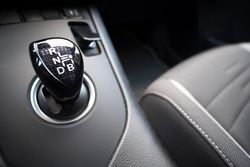What's the Difference Between CVT & Automatic Transmissions?

For a while, vehicles only came in two types, manual or automatic transmission. However, technological advancements gave rise to another option—the continuously variable transmission. Otherwise known as CVT, it’s technically categorized as a form of automatic transmission but with a couple of variances.
How Do They Differ?
CVT and automatic transmission both change gears with minimal input from the driver, which makes it easier to learn driving compared to the stick shift. Both systems only require pressing on the gas pedal to shift gears and accelerate accordingly. However, their similarity ends there.
Automatic Transmission
The traditional automatic transmission comes with clutches and several gears for slowing down or speeding up. Inside the automatic gearboxes, gears move to convert the engine’s torque, or turning force, into actual vehicle speed. Each gear ratio combination can only achieve a particular speed—if you need to accelerate further, the transmission shifts up by going through every gear, from first to second and so on.
How many gears the transmission has is identified through the number of speeds. For instance, a four-speed automatic has four gears. Recent models are now fitted with at least six- to eight-speed transmissions, allowing them to perform better, accelerate faster, and run quieter because of the smoother transitions possible with more gears.
CVT
 The pedals of a CVT are no different from the ones of a traditional automatic transmission system —there’s no third pedal for the clutch. Its mechanism, however, is in a league of its own. Unlike conventional automatics, CVT ditches the gears for a belt and two-pulley system. Linked by a belt, one pulley gets turned by the engine while the other transfers the torque produced to the vehicle’s driveshaft.
The pedals of a CVT are no different from the ones of a traditional automatic transmission system —there’s no third pedal for the clutch. Its mechanism, however, is in a league of its own. Unlike conventional automatics, CVT ditches the gears for a belt and two-pulley system. Linked by a belt, one pulley gets turned by the engine while the other transfers the torque produced to the vehicle’s driveshaft.
Depending on how much power the wheels require, the cone-shaped pulleys change the widths or radius between them. The constant change in the belt loop radius of the two pulleys allows CVT to create an unlimited number of gear ratios, which makes for more powerful and smoother transitions.
What’s Right for You?
Choosing between the two types comes down to preferences. To know which suits you best, do a test drive on both CVT and automatic transmission vehicles. Some drivers find it jarring how CVTs do not make the gear-shifting sound of an automatic engine — here’s no apparent sensation of an accelerating engine because of the constant changing of gear ratios. However, this constant shifting creates a consistent low droning sound that some can take some getting used to. On the other hand, with CVT, the engine operates at peak efficiency, which translates to better fuel economy and fewer emissions produced.
When you need repairs for your CVT or automatic transmission, count on the experts at Quality Transmission Service. Based in Anchorage, AK, their highly skilled mechanics have provided outstanding transmission service—from repairs to maintenance—on both manual and automatic types. Call (907) 561-8767 for a service appointment, or visit their website to learn more about their warranty on transmissions.
About the Business
(106 reviews)
Have a question? Ask the experts!
Send your question

